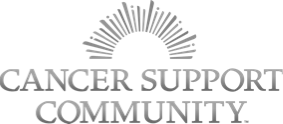Take the next step in the treatment of high-risk classical Hodgkin lymphoma in children with ADCETRIS
ADCETRIS, in combination with a chemotherapy regimen called AVEPC (doxorubicin, vincristine, etoposide, prednisone, and cyclophosphamide) is approved to treat children 2 years of age and older with previously untreated high risk classical Hodgkin lymphoma. Find out more about how ADCETRIS works and review the efficacy and safety results in children.
How does ADCETRIS work?
Step 1
ADCETRIS aims to attach to cells that have a protein on their surface called CD30.
Step 2
Once attached, ADCETRIS is brought into the cell and released.
Step 3
The drug stops the cell from being able to grow and divide, causing the cell to die.
CD30 is found on classical Hodgkin lymphoma cells and not commonly found on healthy cells. Even though ADCETRIS is a CD30-directed therapy, it can still harm normal cells and cause side effects. Talk to a doctor if there are questions about possible side effects.
AHOD1331 study information
Study design
AHOD1331 was a large clinical study of 600 children 2 years and older that compared the effectiveness and safety of ADCETRIS plus AVEPC with ABVEPC chemotherapy in patients with previously untreated classical Hodgkin lymphoma.
- 300 pediatric patients were assigned to receive ADCETRIS plus AVEPC every 3 weeks for up to 5 cycles
- 300 pediatric patients were assigned to receive ABVEPC chemotherapy every 3 weeks for up to 5 cycles
Patients ranged in age from 3 to 21 years; the median age was 15. High risk was defined as Ann Arbor Stage 2B with bulk disease, Stage 3B, Stage 4A, and Stage 4B. Researchers observed these results at a median follow-up time of just over 3.5 years (42.1 months).
APPROXIMATELY 3.5 YEARS AFTER TREATMENT
ADCETRIS plus AVEPC was more effective than ABVEPC
- The following data represent the event-free survival that was observed at 3 years
- Event-free survival means the length of time from the start of treatment to the cancer growing or spreading, the cancer coming back, a separate cancer diagnosis, or death
- These data are the primary endpoint in the study, and the results were used to help support the FDA approval of ADCETRIS plus AVEPC


- At 3 years, about 92% of pediatric patients treated with ADCETRIS plus AVEPC did not have their cancer grow, spread, or come back, receive a separate cancer diagnosis, or die compared to about 83% of pediatric patients treated with ABVEPC chemotherapy
What to expect during treatment with ADCETRIS

How ADCETRIS is given
ADCETRIS is given with chemotherapy (AVEPC) as an intravenous (IV) infusion (directly into the vein), at the doctor's office or clinic.
The infusion is given every 3 weeks for up to 5 treatments.
The ADCETRIS infusion takes about 30 minutes. Additional time is needed for AVEPC chemotherapy infusions. The doctor may ask patients to come to the office early to prepare and stay afterward for monitoring. The doctor may reduce, hold, or stop the ADCETRIS treatment based on side effects.
Before starting treatment, tell the doctor about the following:
- All medical conditions
- Current medications, including supplements and vitamins to avoid drug interactions
- If a patient is pregnant or plans to become pregnant, because ADCETRIS treatment may harm their unborn baby
- Female patients who are able to become pregnant should use effective birth control during treatment and for 2 months after their last ADCETRIS dose
- Male patients with female partners who can become pregnant should use effective birth control during treatment and for 4 months after their last ADCETRIS dose
- If a patient is breastfeeding
- Don’t breastfeed during treatment due to the risk to the baby
Use the questions in the Doctor Discussion Guide to get started talking about ADCETRIS treatment with a doctor.
Talk to a doctor about any side effect concerns
The doctor should prescribe granulocyte colony-stimulating factor (G-CSF) along with the ADCETRIS treatment right at the start. G-CSF is a medication that may help reduce the chance of neutropenia (low white blood cell count).
Don’t stop, change, or delay ADCETRIS plus AVEPC treatment unless directed by a doctor. The doctor may take additional steps to help manage side effects, including:
- Reducing the ADCETRIS dosage, or delaying the next dose, until symptoms improve
- Stopping ADCETRIS completely if side effects are severe or do not improve
From cost to resources, support may be available
The patient support programs available through Pfizer are designed to help patients begin their prescribed ADCETRIS treatment. If eligible and enrolled, you can receive personalized support, including:
- Confirming your insurance coverage
- Evaluating out-of-pocket costs and available copay options
- Helping you access alternative support options if you can’t afford ADCETRIS*
Talk to your healthcare provider to learn how to enroll in the Pfizer Patient Assistance Program.
Information provided by patient support programs from Pfizer is not intended to be a substitute for your healthcare provider. Discuss any questions you may have about your disease and your treatment with your healthcare team.
*Financial support may be provided through foundation referral. Pfizer does not guarantee that enrollment will result in coverage and/or reimbursement.
Apps to help manage care†
Focus on Lymphoma
This app from the Lymphoma Research Foundation offers:
- Tailored content for your type of cancer
- A way to track your medications, blood counts, and doctor discussions
- Educational resources, stories of hope, and diagnosis and treatment information
- Resources, financial assistance, counseling, and help finding a doctor
- Ways to connect with others
LLS Health Manager
This app from the Leukemia and Lymphoma Society features:
- Side effect, medication, food, and hydration trackers
- Questions for doctors
- Meal-planning tools
- Shared caregiver access
- Education, support, and resources
Helpful links†
Connect with other people living with cancer, and their caregivers
Dedicated to funding research, finding cures, and ensuring access to treatments for patients. The Leukemia & Lymphoma Society (LLS) is committed to providing information, resources, and support to those affected by blood cancers.
Devoted to improving care through patient education and support services and improving outcomes through investment in the most promising lymphoma research.
Provides case management, counseling, support groups, education, publications, and financial and co-payment assistance.

Offers a global network of support that is available online and at community-based centers and hospitals.
Provides information, support, referrals, and services to cancer patients to help protect their individual reproductive and parenthood goals.
†Pfizer is not responsible for the content or services of these providers. The information/links provided by Pfizer are not meant to replace a physician’s medical advice.
Questions to ask a doctor
It’s important to ask questions and share concerns about ADCETRIS treatment with a doctor. The Doctor Discussion Guide can help navigate the conversation to get the most out of the visit. Take this printable PDF to the next appointment.
Glossary
AVEPC: A combination of 5 chemotherapies—combination with doxorubicin, vincristine, etoposide, prednisone, and cyclophosphamide.
ABVEPC: A combination of 6 chemotherapies—combination with doxorubicin, bleomycin, vincristine, etoposide, prednisone, and cyclophosphamide.
G-CSF: Granulocyte colony-stimulating factor, a medication that can help boost white blood cell count.
FDA: Food and Drug Administration.
Neutropenia: Having low levels of a type of white blood cell called neutrophils that help your immune system. You could have a higher chance of getting an infection.